Charles M. Kozierok The TCP-IP Guide
Подождите немного. Документ загружается.

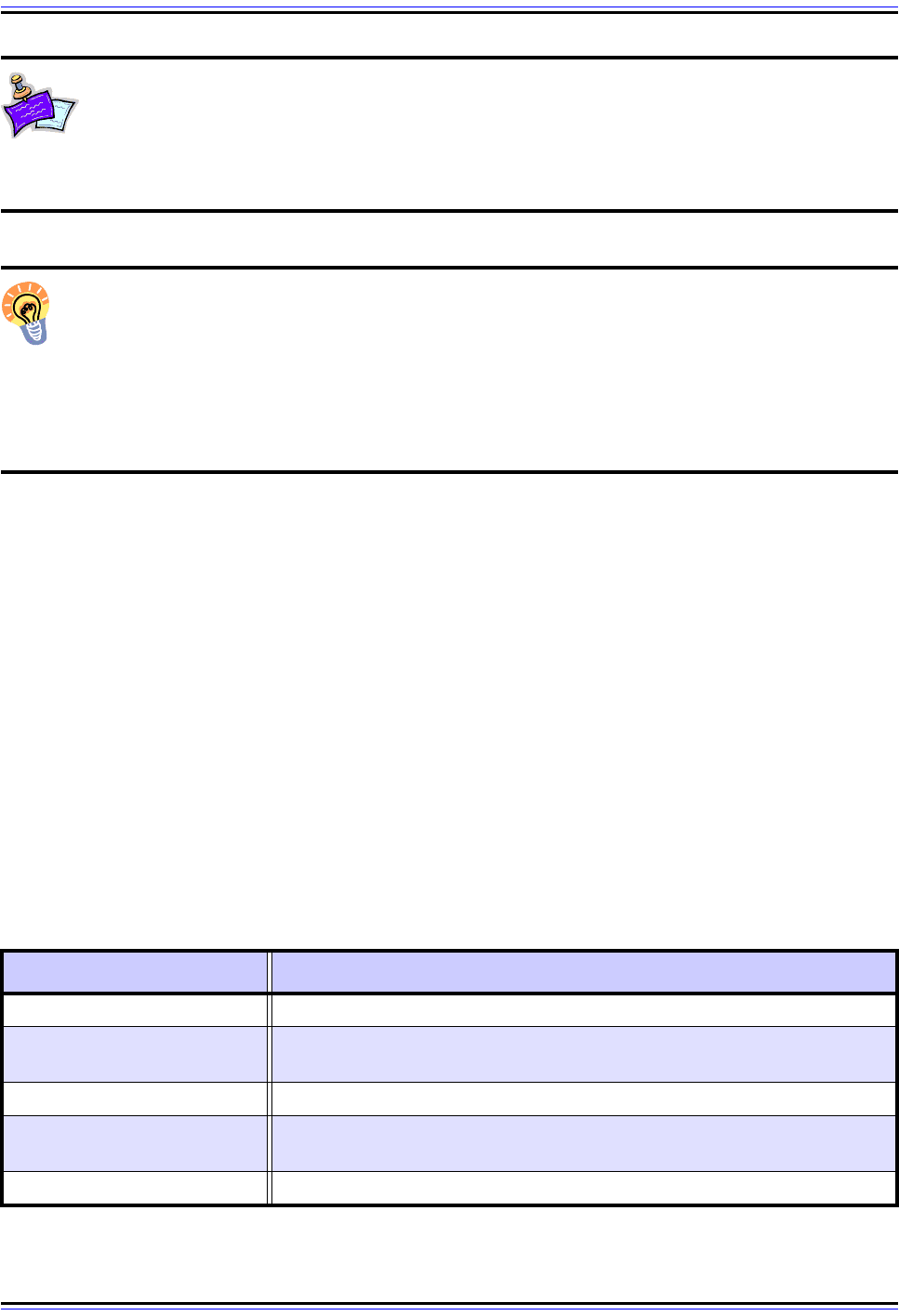
The TCP/IP Guide - Version 3.0 (Contents) ` 1641 _ © 2001-2005 Charles M. Kozierok. All Rights Reserved.
Note: While the inability to get a response from a device to a ping has traditionally
been interpreted as a problem in communication, this is not always necessarily the
case. In the current era of increased security consciousness, some networks are
set up to not respond to Echo messages, to protect against attacks that use floods of such
messages. In this case a ping will fail, even though the host may be quite reachable.
Key Concept: The TCP/IP ping utility is used to verify the ability of two devices on a
TCP/IP internetwork to communicate. It operates by having one device send ICMP
Echo (Request) messages to another, which responds with Echo Reply messages.
The program can be helpful in diagnosing a number of connectivity issues, especially if it is
used to test the ability to communicate with other devices in different locations. It also
allows the average round-trip delay to exchange messages with another device to be
estimated.
ping Options and Parameters
All ping implementations include a number of options and parameters that allow an admin-
istrator to fine-tune how it works. They allow ping to be used for more extensive or specific
types of testing. For example, ping can be set in a mode where it sends Echo messages
continually, to check for an intermittent problem over a long period of time. You can also
increase the size of the messages sent or the frequency with which they are transmitted, to
test the ability of the local network to handle large amounts of traffic.
As always, the exact features of the ping program are implementation-dependent; even
though UNIX and Windows systems often include many of the same options, they usually
use completely different option codes. Table 286 shows some of the more important options
that are often defined for the utility on many UNIX systems, and where appropriate, the
parameters supplied with the option. Table 287 shows a comparable table for a typical
Windows system.
Table 286: Common UNIX ping Utility Options and Parameters (Page 1 of 2)
Option / Parameters Description
-c <count> Specifies the number of Echo messages that should be sent.
-f
Flood mode; sends Echo packets at high speed to stress-test a network.
This can cause serious problems if not used carefully!
-i <wait-interval> Tells the utility how long to wait between transmissions.
-m <ttl-value>
Overrides the default Time To Live (TTL) value for outgoing Echo
messages.
-n Numeric output only; suppresses lookups of DNS host names to save time.
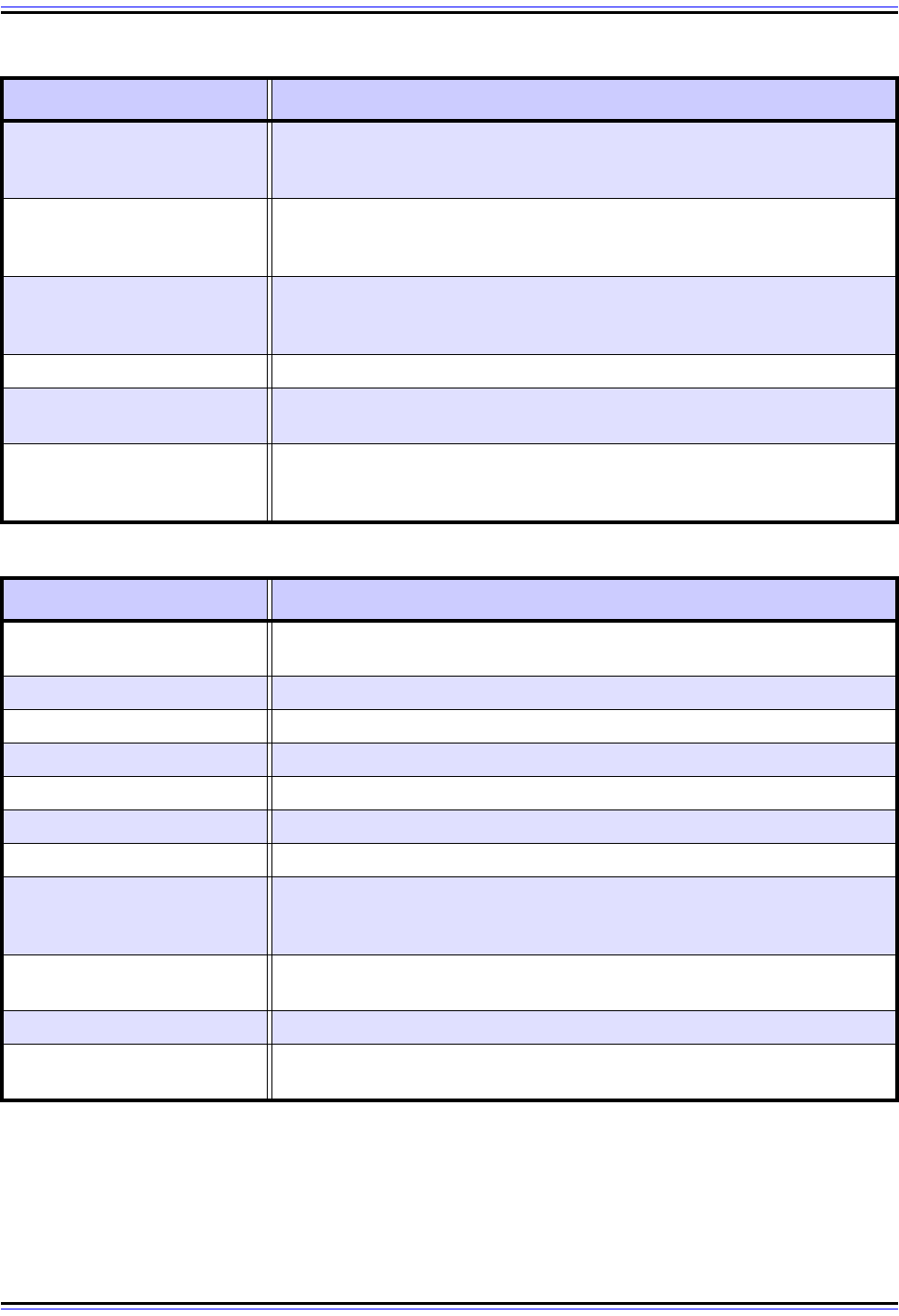
The TCP/IP Guide - Version 3.0 (Contents) ` 1642 _ © 2001-2005 Charles M. Kozierok. All Rights Reserved.
The ping6 Utility
The IPv6 version of ping, sometimes called ping6, works in very much the same way as
IPv4 ping. The main differences between the two utilities are that ping6’s options and
parameters reflect the changes made in addressing and routing in IPv6.
-p <pattern>
Allows a byte pattern to be specified for inclusion in the transmitted Echo
messages. This can be useful for diagnosing certain odd problems that
may only occur with certain types of transmissions.
-q
Quiet output; only summary lines are displayed at the start and end of the
program’s execution, while the lines for each individual message are
suppressed.
-R
Tells the utility to include the Record Route IP option, so the route taken by
the ICMP Echo message can be displayed. This option is not supported by
all implementations; the traceroute utility is usually a better idea.
-s <packet-size> Specifies the size of outgoing message to use.
-S <src-addr>
On devices that have multiple IP interfaces (addresses), allows a ping sent
from one interface to use an address from one of the others.
-t <timeout>
Specifies a timeout period, in seconds, after which the ping utility will
terminate, regardless of how many requests or replies have been sent or
received.
Table 287: Common Windows ping Utility Options and Parameters
Option / Parameters Description
-a
If the target device is specified as an IP address, force the address to be
resolved to a DNS host name and displayed.
-f Sets the Don’t Fragment bit in the outgoing datagram.
-i <ttl-value> Specifies the TTL value to be used for outgoing Echo messages.
-j <host-list> Sends the outgoing messages using the specified loose source route.
-k <host-list> Sends the outgoing messages using the indicated strict source route.
-l <buffer-size> Specifies the size of the data field in the transmitted Echo messages.
-n <count> Tells the utility how many Echo messages to send.
-r <count>
Specifies the use of the Record Route IP option and the number of hops to
be recorded. As with the corresponding UNIX “-R” option, the traceroute
utility is usually preferable.
-s <count>
Specifies the use of the IP Timestamp option to record the arrival time of
the Echo and Echo Reply messages.
-t Sends Echo messages continuously until the program is interrupted.
-w <timeout>
Specifies how long the program should wait for each Echo Reply before
giving up, in milliseconds (default is 4000, for 4 seconds).
Table 286: Common UNIX ping Utility Options and Parameters (Page 2 of 2)
Option / Parameters Description

The TCP/IP Guide - Version 3.0 (Contents) ` 1643 _ © 2001-2005 Charles M. Kozierok. All Rights Reserved.
TCP/IP Route Tracing Utility (traceroute/tracert/traceroute6)
The ping utility described in the preceding topic is extremely helpful for checking whether or
not two devices are able to talk to each other. However, it provides very little information
regarding what is going on between those two devices. In the event that ping shows either a
total inability to communicate or intermittent connectivity with high loss of transmitted data,
we need to know more about what is happening to IP datagrams as they are carried across
the internetwork. This is especially important when the two devices are far from each other,
especially if we are trying to reach a server on the public Internet.
I described in my overview of IP datagram delivery that when two devices are not on the
same network, data sent between them must be delivered from one network to the next
until it reaches its destination. This means that any time data is sent from device A on one
network to device B on another, it follows a route, which may not be the same for each
transmission.
When communication problems arise, it is very useful to be able to check the specific route
taken by data between two devices. A special route tracing utility is provided for this
function, called traceroute (abbreviated tracert in Windows systems, a legacy of the old
eight-character limit for DOS program names). The IPv6 equivalent of this program is called
traceroute6.
Operation of the traceroute Utility
Like the ping utility, traceroute is implemented using ICMP messages. However, unlike ping,
traceroute was originally not designed to use a special ICMP message type intended exclu-
sively for route tracing. Instead, it makes clever use of the IP and ICMP features that are
designed to prevent routing problems.
Recall that the IP datagram format includes a Time To Live (TTL) field. This field is set to
the maximum number of times that a datagram may be forwarded before it must be
discarded; it exists to prevent datagrams from circling an internetwork endlessly. If a
datagram must be discarded due to expiration of the TTL field, the device that discards it is
supposed to send back to the device that send that datagram an ICMP Time Exceeded
message. This is explained in much more detail in the topic that describes that message.
Under normal circumstances, this only occurs when there is a problem, such as a router
loop or other misconfiguration issue. What traceroute does is to force each router in a route
to report back to it by intentionally setting the TTL value in test datagrams to a value too low
to allow them to reach their destination.
Suppose we have device A and device B, which are separated by routers R1 and R2—
three hops total. If you do a traceroute from device A to device B, here’s what happens:
1. The traceroute utility sends a dummy UDP message (sometimes called a probe) to a
port number that is intentionally selected to be invalid. The TTL field of the IP
datagram is set to 1. When R1 receives the message, it decrements the field, which
will make its value 0. That router discards the probe and sends an ICMP Time
Exceeded message back to device A.
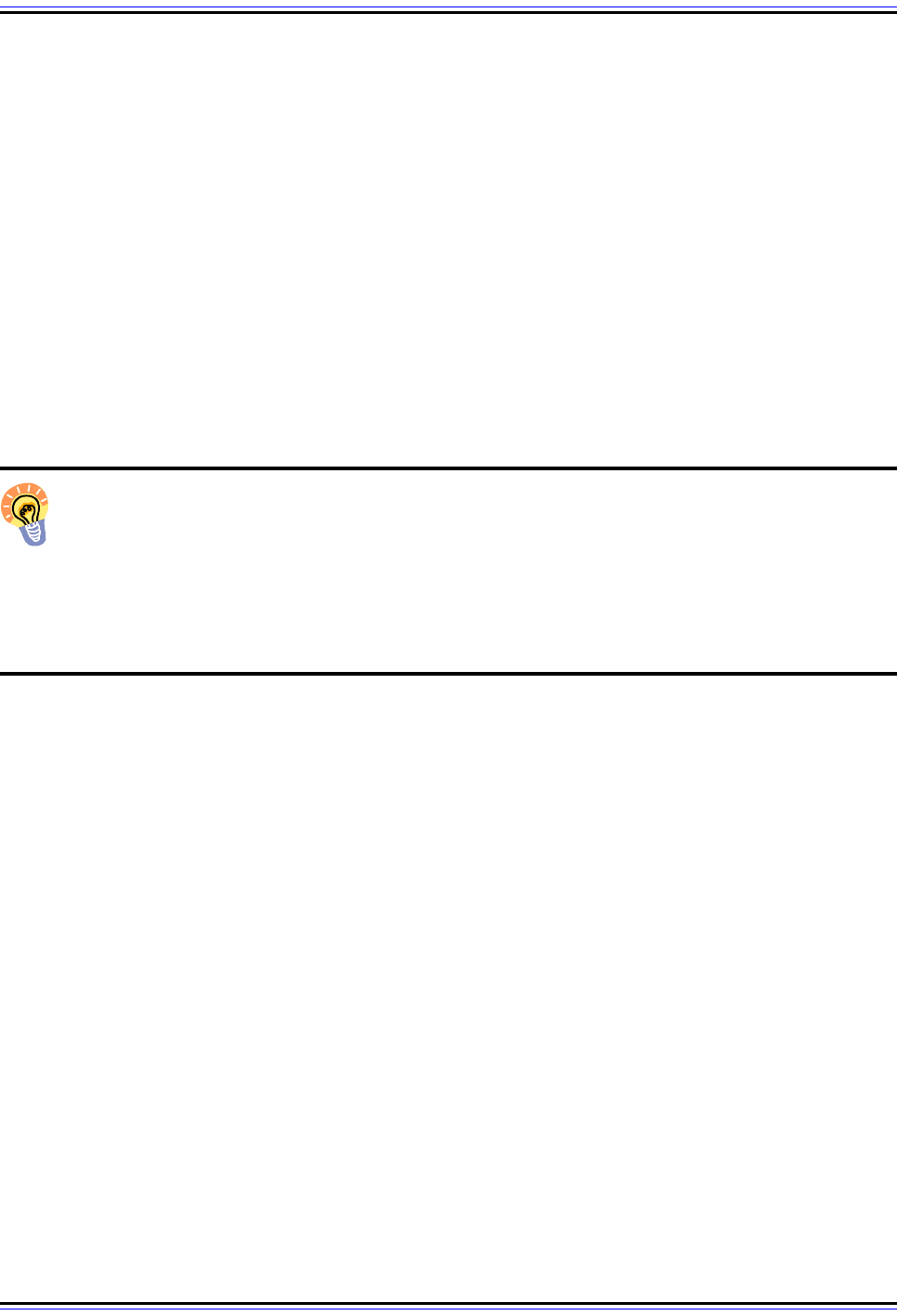
The TCP/IP Guide - Version 3.0 (Contents) ` 1644 _ © 2001-2005 Charles M. Kozierok. All Rights Reserved.
2. Device A then sends a second UDP message with the TTL field set to 2. This time, R1
reduces the TTL value to 1 and sends it to R2, which reduces the TTL field to 0 and
sends a Time Exceeded message back to A.
3. Device A sends a third UDP message, with the TTL field set to 3. This time, the
message will pass through both routers and be received by device B. However, since
the port number was invalid, the message is rejected by device B, which sends back a
Destination Unreachable message to device A.
This process is illustrated in Figure 321. Amusingly, we see that A sends out three
messages to B, and gets back three error messages, and is happy about it! ☺ The route to
device B is thus indicated by the identities of the devices sending back the error messages,
in sequence. By keeping track of the time between when it sent each UDP message and
received back the corresponding error message, the traceroute utility can also display how
long it took to communicate with each device. In practice, usually three dummy messages
are sent with each TTL value, so their transit times can be averaged by the user if desired.
Key Concept: The traceroute utility takes the idea behind ping one step further,
allowing not only communication between two devices to be checked, but also letting
an administrator see a list of all the intermediate devices between the pair. It works
by having the initiating host send a series of test datagrams with TTL values that cause
each to expire sequentially at each device on the route. The traceroute program also shows
how much time it takes to communicate with each device between the sending host and a
destination device.
Basic Use of the traceroute Utility
Table 288 shows an example of a traceroute sent between two of the UNIX computers I use
on a regular basis. I added the “-q2” parameter to change the default of three dummy
messages per hop to two, so the output would fit better in its display table. In this case, the
servers are separated by 14 hops. Notice how the elapsed time generally increases as the
distance from the transmitting device increases, but it is not consistent because of random
elements in the delay between any two devices (see the incongruously-large value in hop
#10, for example). Also notice the asterisk (“*”) in the seventh hop, which means that no
response was received before the timeout period for the second transmission with a TTL
value of 7. Finally, there is no report at all for hop #13; this machine may have been
configured not to send Time Exceeded messages.
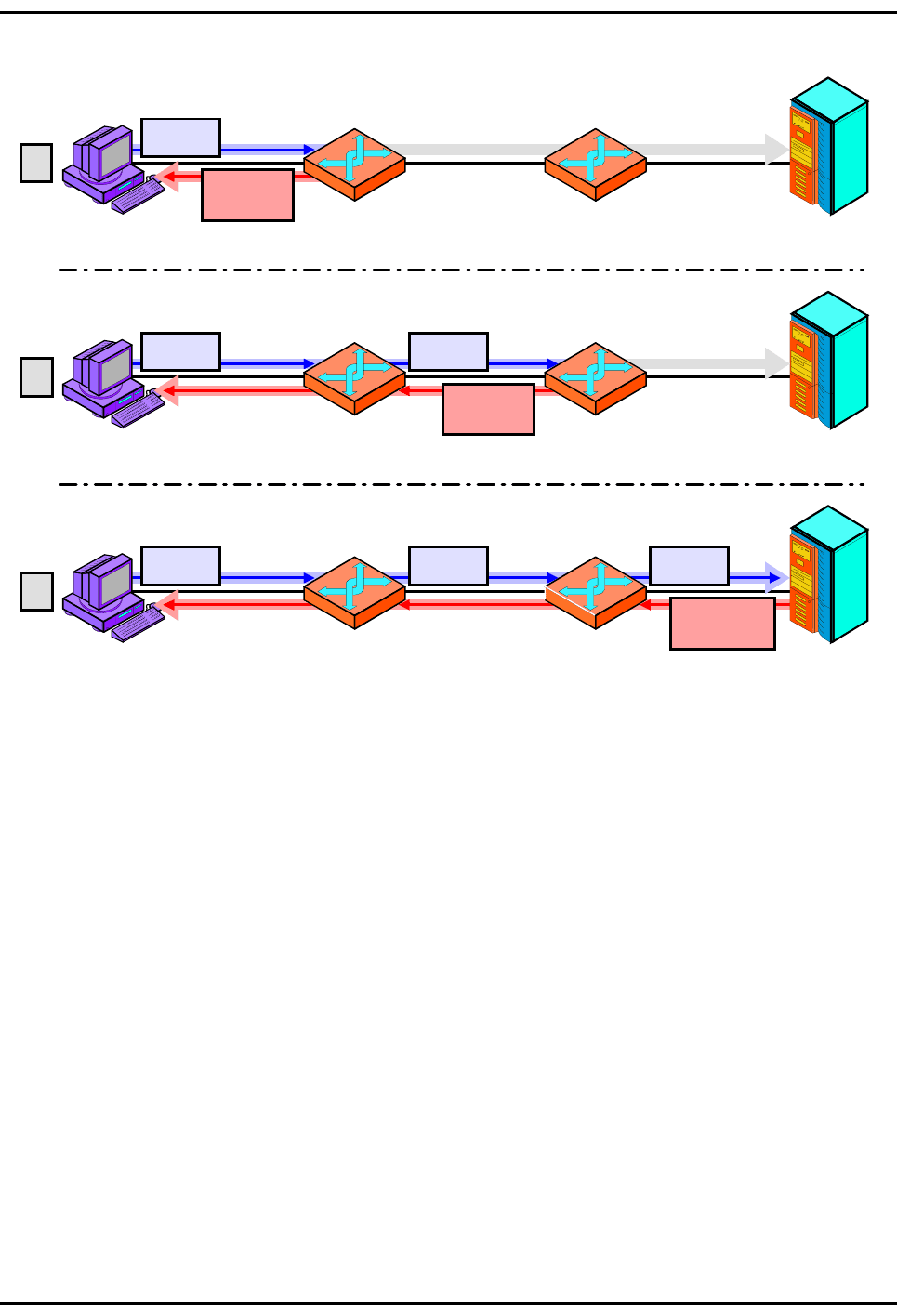
The TCP/IP Guide - Version 3.0 (Contents) ` 1645 _ © 2001-2005 Charles M. Kozierok. All Rights Reserved.
Figure 321: Operation of the traceroute/tracert Utility
The traceroute utility identifies the devices in a route by forcing them to report back failures to route datagrams
with parameters intentionally set to invalid values. The first message sent by device A here has a Time To Live
(TTL) value of 1, which will cause R1 it to drop it and send an ICMP Time Exceeded message back to A. The
second one has a TTL value of 2, so it will be dropped and reported by R2. The third will pass both routers and
get to the destination host, B, but since the message is deliberately chosen with a bogus port number, this will
cause an ICMP Destination Unreachable to be returned. These error messages identify the sequence of
devices in the route between devices A and B.
TTL = 1
ICMP Time
Exceeded
#1
TTL = 2
#2
TTL = 1
A
A
R1 R2 B
R1 R2 B
TTL = 3
#3
AR1R2B
ICMP Time
Exceeded
ICMP Dest.
Unreachable
TTL = 2 TTL = 1
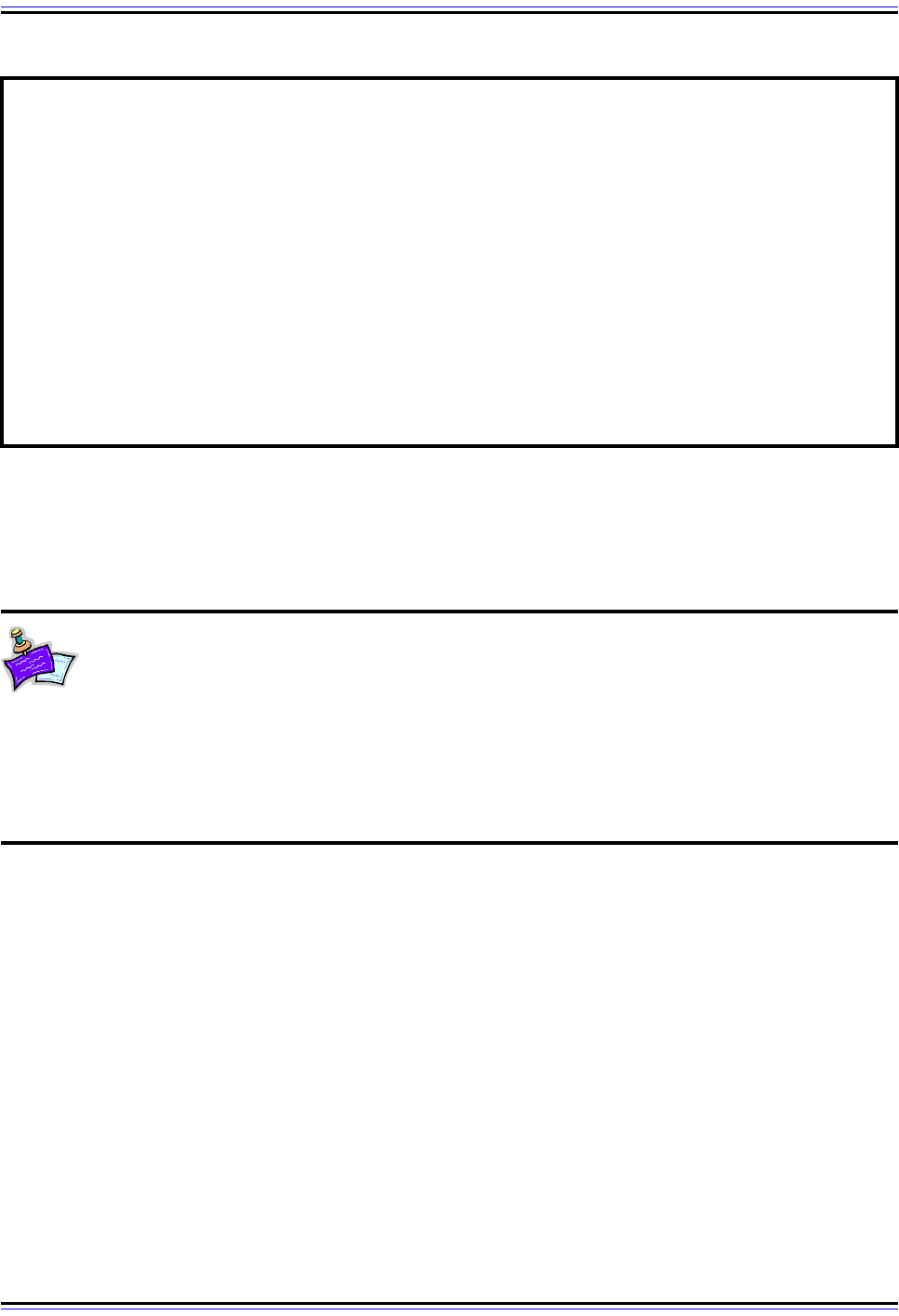
The TCP/IP Guide - Version 3.0 (Contents) ` 1646 _ © 2001-2005 Charles M. Kozierok. All Rights Reserved.
Additional “unusual” results may be displayed under certain circumstances. For example,
the traceroute program may display a code such a “!H”, “!N” or “!P” to indicate receipt of an
unexpected Destination Unreachable message for a host, network, or protocol, respec-
tively. Other error messages may also exist, depending on the implementation.
Note: Not all traceroute utility implementations use the technique described
above. Microsoft’s tracert works not by sending UDP packets but rather ICMP
Echo messages with increasing TTL values. It knows it has reached the final host
when it gets back an Echo Reply message. A special ICMP Traceroute message was also
developed in 1993, which was intended to improve the efficiency of traceroute by elimi-
nating the need to send many UDP messages for each route tracing. Despite its technical
advantages, since it was introduced long after TCP/IP was widely deployed, it never
became a formal Internet standard and is not seen as often as the traditional method.
traceroute Options and Parameters
As is the case with ping, traceroute can be used with an IP address or host name. If no
parameters are supplied, default values will be used for key parameters; on the system I
used, the defaults are three “probes” for each TTL value, a maximum of 64 hops tested, and
packets 40 bytes in size. However, a number of options and parameters are also supported
Table 288: Route Tracing Using the traceroute Utility
traceroute -q2 www.pcguide.com
traceroute to www.pcguide.com (209.68.14.80), 40 hops max, 40 byte packets
1 cisco0fe0-0-1.bf.sover.net (209.198.87.10) 1.223 ms 1.143 ms
2 cisco1fe0.bf.sover.net (209.198.87.12) 1.265 ms 1.117 ms
3 cisco0a5-0-102.wnskvtao.sover.net (216.114.153.170) 8.004 ms 7.270 ms
4 207.136.212.234 (207.136.212.234) 7.163 ms 7.601 ms
5 sl-gw18-nyc-2-0.sprintlink.net (144.232.228.145) 15.948 ms 20.931 ms
6 sl-bb21-nyc-12-1.sprintlink.net (144.232.13.162) 21.578 ms 16.324 ms
7 sl-bb27-pen-12-0.sprintlink.net (144.232.20.97) 18.296 ms *
8 sl-bb24-pen-15-0.sprintlink.net (144.232.16.81) 18.041 ms 18.338 ms
9 sl-bb26-rly-0-0.sprintlink.net (144.232.20.111) 20.259 ms 21.648 ms
10 sl-bb20-rly-12-0.sprintlink.net (144.232.7.249) 132.302 ms 37.825 ms
11 sl-gw9-rly-8-0.sprintlink.net (144.232.14.22) 23.085 ms 20.082 ms
12 sl-exped4-1-0.sprintlink.net (144.232.248.126) 43.374 ms 42.274 ms
13 * *
14 pcguide.com (209.68.14.80) 41.310 ms 49.455 ms
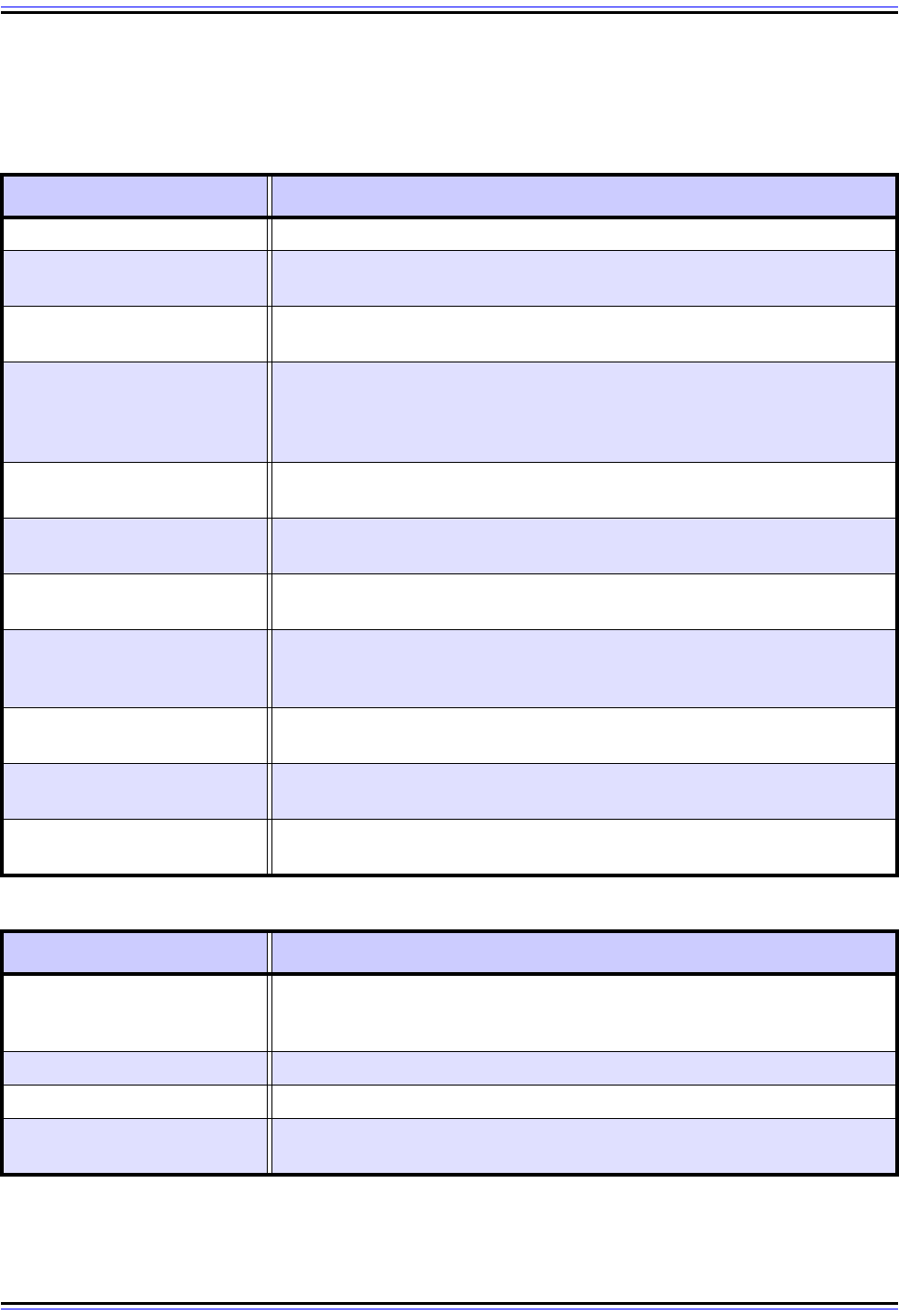
The TCP/IP Guide - Version 3.0 (Contents) ` 1647 _ © 2001-2005 Charles M. Kozierok. All Rights Reserved.
to give an administrator more control over how the utility functions (such as the “-q”
parameter I used in Table 288). Some of the typical ones in UNIX systems are described in
Table 289, while a smaller number of options exist in Windows, shown in Table 290.
Table 289: Common UNIX traceroute Utility Options and Parameters
Option / Parameters Description
-g <host-list> Specifies a source route to be used for the trace.
-M <initial-ttl-value>
Overrides the default value of 1 for the initial TTL value of the first outgoing
probe message.
-m <max-ttl-value>
Sets the maximum TTL value to be used; this limits how long a route the
utility will attempt to trace.
-n
Displays the route using numeric addresses only, rather than showing both
IP addresses and host names. This speeds up the display by saving the
utility from having to perform reverse DNS lookups on all the devices in the
route (ICMP messages use IP addresses, not domain names.)
-p <port-number>
Specifies the port number to be used as the destination of the probe
messages.
-q <queries>
Tells the utility how many probes to send to each device in the route
(default is 3).
-r
Tells the program to bypass the normal routing tables and send directly to a
host on an attached network.
-s <src-addr>
On devices that have multiple IP interfaces (addresses), allows the device
to use an address from one interface on a traceroute using another
interface.
-S
Instructs the program to display a summary of how many probes did not
receive a reply.
-v
Sets verbose output mode, which informs the user of all ICMP messages
received during the trace.
-w <wait-time>
Specifies how long the utility should wait for a reply to each probe, in
seconds (typical default is 3 to 5).
Table 290: Common Windows tracert Utility Options and Parameters
Option / Parameters Description
-d
Displays the route using numeric addresses only rather than showing both
IP addresses and host names, for faster display. This is the same as the “-
n” option on UNIX systems.
-h <maximum-hops> Specifies the maximum number of hops to use for tracing; default is 30.
-j <host-list> Sends the outgoing probes using the specified loose source route.
-w <wait-time>
Specifies how long to wait for a reply to each probe, in milliseconds (default
is 4000, for 4 seconds).

The TCP/IP Guide - Version 3.0 (Contents) ` 1648 _ © 2001-2005 Charles M. Kozierok. All Rights Reserved.
The traceroute6 Utility
The traceroute6 utility is the IPv6 version of traceroute and functions in a very similar
manner to its IPv4 predecessor. It obviously uses IPv6 datagrams instead of IPv4 ones, and
responses from traced devices are in the form of ICMPv6 Time Exceeded and Destination
Unreachable messages rather than their ICMPv4 counterparts.
TCP/IP Address Resolution Protocol Utility (arp)
TCP/IP allows us to create very large internetworks by connecting individual networks
together. When we send data between devices on different networks, the data is routed
between networks using the Internet Protocol. This permits us to view even a huge inter-
network such as the global Internet as if it were just a single large network. All devices on
the internetwork are considered to be virtually connected at layer three, since the process
of routing lets any device talk to any other one.
However, there is no way for devices on distant networks to communicate directly. The
internetwork communication at layer three really consists of a number of steps, called hops,
that carry the data from its source to destination. Each hop in a route requires that data be
sent between a pair of hardware devices, and each transmission must use layer two
hardware addresses. Since TCP/IP uses layer three addresses, this means each hop
requires that we translate the IP address of the target of the hop to a hardware address.
This is called address resolution; the reasons why it is needed and the methods used for it
are explained in detail in the section on address resolution concepts.
In TCP/IP, address resolution functions are performed by the aptly-named Address
Resolution Protocol (ARP). When a device needs to transmit to a device with a particular IP
address, it can use ARP’s request/reply messaging protocol to find out which hardware
device corresponds to that IP address. However, each such message exchange takes time
and network bandwidth, so for efficiency, every device maintains an ARP cache, which is a
table containing mappings between IP and hardware addresses. The ARP cache table can
contain a combination of static cache entries that are manually inserted for frequently-
accessed devices, and dynamic entries, which are entered automatically when a request/
reply resolution is done, so the next time it is necessary to send to that device, the lookup
process can be avoided.
arp Utility Functions
To allow administrators to manage this ARP cache table, TCP/IP devices include an arp
utility. It has three basic functions, which are invoked using three different versions of the
command (which, for once, are the same in UNIX and Windows!):
☯ ARP Cache Table Display (“arp -a”): When the “-a” option is used with the utility, it
displays the current contents of the ARP cache table. Each entry in the table shows
the IP address and hardware address pair for one device (interface, actually); usually
an indication is also given as to whether each entry is static or dynamic
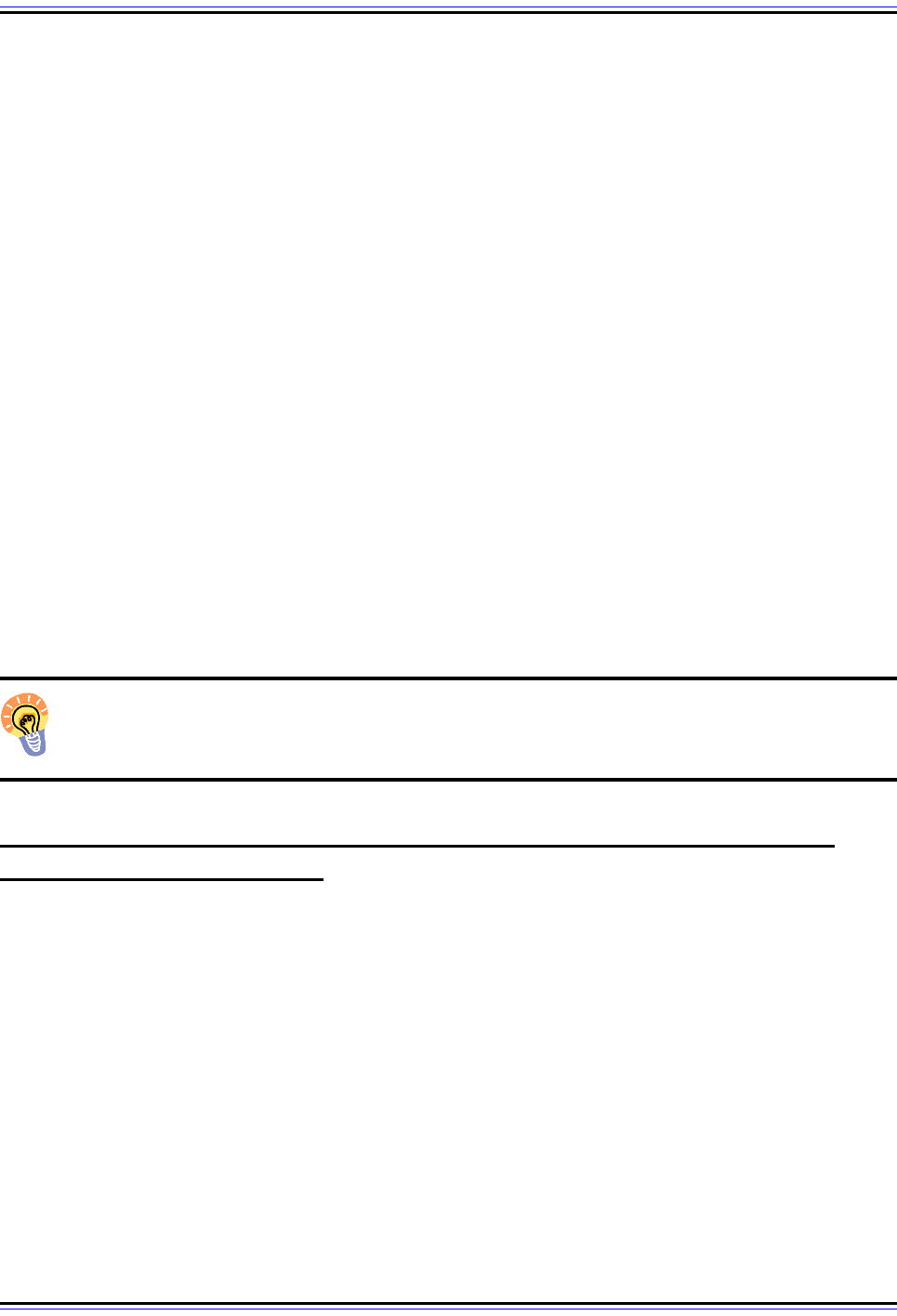
The TCP/IP Guide - Version 3.0 (Contents) ` 1649 _ © 2001-2005 Charles M. Kozierok. All Rights Reserved.
The exact format of the display varies from one implementation to the next; some
programs show IP addresses while others show host names, and still others may
show both. Some systems default to displaying host names but allow the “-n” option to
also be used to force only IP addresses to be displayed and not names.
☯ ARP Cache Table Entry Addition (“arp -s <host-name> <hw-addr>”): This syntax
allows an administrator to make a new manual ARP cache table entry that maps the
given host name to the specified hardware address.
☯ ARP Cache Table Entry Deletion (“arp -d <host-name>”): This command removes
the specified cache entry from the table. Some implementations allow the addition of
another parameter to specify that all entries should be removed from the cache.
Additional arp Features
Certain versions of the software may also supplement these basic commands with
additional features. One common additional option on UNIX systems is the ability to specify
a file from which cache table entries may be read, using “arp -f <file-name>”. This saves a
considerable amount of time and effort compared to typing each entry manually using “arp -
s”.
Note also that access to options that cause the ARP cache table to be changed may be
restricted by the operating system to only authorized users. This is especially true of the
delete function, and especially especially true of the function that allows the entire ARP
table to be deleted. ☺
Key Concept: The TCP/IP arp utility is used by an administrator to inspect or modify
a host’s ARP cache table, which contains mappings between TCP/IP host names
and IP addresses.
TCP/IP DNS Name Resolution and Information Lookup Utilities
(nslookup, host and dig)
The Domain Name System (DNS) is a critically important part of TCP/IP internetworks,
especially the modern Internet, because it allows hosts to be accessed using easily-remem-
bered names rather than confusing numerical addresses. Two different primary types of
devices are involved in the operation of DNS: DNS name servers that store information
about domains, and DNS resolvers that query DNS servers to transform names into
addresses, as well as performing other necessary functions.
DNS resolvers are employed by Internet users on a continual basis to translate DNS names
into address, but under normal circumstances, they are always invoked indirectly. Each
time a user types a DNS name into a program such as a World Wide Web browser or FTP
client —or even uses it in one of the other utilities in this section, such as ping or
traceroute—the resolver automatically performs the name resolution without the user
having to ask. For this reason, there is no need for users to manually resolve DNS names
into addresses.

The TCP/IP Guide - Version 3.0 (Contents) ` 1650 _ © 2001-2005 Charles M. Kozierok. All Rights Reserved.
However, administrators often do need to perform a DNS resolution manually. For example,
when troubleshooting a problem, the administrator may know a host’s name but not its
address; in the case of a security problem, the address may show up in a log file but the
host name may not be known. In addition, even though users do not need to know the
specifics of the resource records that define a DNS domain, administrators often need to be
able to check these details, to make sure a domain is set up properly. Finally, admins also
need some way to be able to diagnose problems with DNS servers themselves.
The nslookup Utility
To support all of these needs, modern TCP/IP implementations come equipped with one or
more DNS name resolution and information lookup utilities. One of the most common DNS
diagnostic utilities is nslookup (“name server lookup”), which has been around for many
years. The details of how the program is implemented of course depend on the operating
system, though most of them are quite similar in operation and settings. The utility can
normally be used in two modes: interactive or non-interactive.
Non-Interactive Use of nslookup
The non-interactive version of nslookup is the simplest, and is most often used when an
administrator wants to just quickly translate a name into an address or vice-versa. It is run
by issuing the nslookup command using the following simple syntax:
nslookup <host> [<server>]
Here, “<host>” can be a DNS domain name, in which case a normal resolution will be
performed, or it may be an IP address, which will cause nslookup to do a reverse resolution
to return the associated DNS domain name. The “<server>” parameter is optional; if
omitted, the program uses the default name server of the host where the command was
issued. Table 291 shows a simple example of non-interactive use of nslookup.
This example was done on my home PC that uses the Starband satellite Internet service; it
is configured to use Starband’s name server (“ns1-mar.starband.com”). The answer
provided here is labelled “non-authoritative” because it came not from one of the DNS
name servers that is a DNS authority for www.pcguide.com, but rather the Starband name
server’s DNS cache.
Table 291: DNS Name Resolution Using the nslookup Utility
D:\aa>nslookup www.pcguide.com
Server: ns1-mar.starband.com
Address: 148.78.249.200
Non-authoritative answer:
Name: pcguide.com
Address: 209.68.14.80
Aliases: www.pcguide.com
